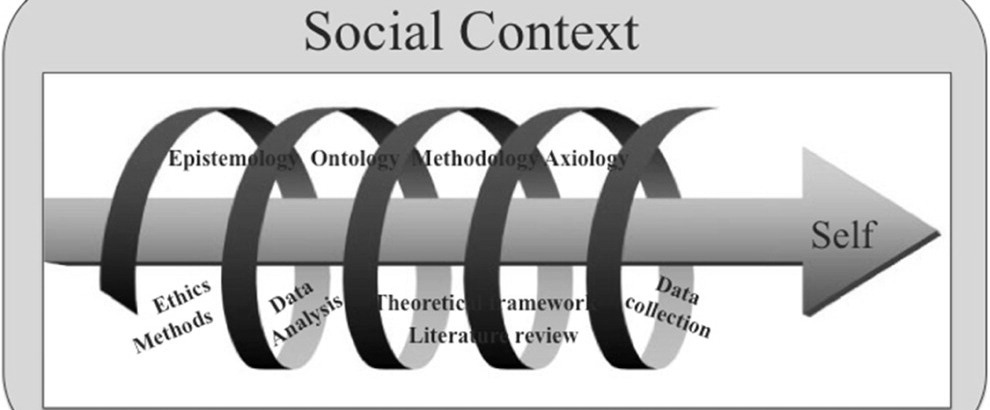Introduction:
Reflexivity, a powerful mental model, shapes the way we make decisions. This concept revolves around the idea that our thoughts, beliefs, and actions are influenced by our perceptions of the world, which, in turn, shape our reality. Anchored in human psychology, reflexivity holds great relevance in decision-making processes. It manifests in our day-to-day lives, often leading individuals and groups to make irrational decisions contrary to their best interests. By exploring examples across personal life decisions, business scenarios, and public policy-making, we can gain insight into how falling prey to this fallacy can undermine rational decision-making. Additionally, we will delve into the mental biases and psychological underpinnings associated with reflexivity, offering practical strategies to identify and overcome this cognitive trap.
Defining Reflexivity:
Reflexivity is a mental model that describes the reciprocal relationship between our beliefs, actions, and the external world. It posits that our subjective interpretations of events influence our behavior, which, in turn, impacts the environment we navigate. This interplay between perception and action creates a feedback loop, where our understanding of the world is continuously shaped and reshaped based on our experiences. Reflexivity acknowledges the role of subjectivity in decision-making and highlights the potential for biases and distortions to influence our choices.
Examples of Reflexivity in Action:
Personal Life Decisions:
Consider an individual who holds a negative self-perception and believes they are destined to fail. This belief colors their actions, leading them to avoid challenging opportunities or self-sabotage when success is within reach. As a result, their experiences reinforce the negative self-perception, perpetuating a reflexive loop that reinforces failure. By succumbing to reflexivity, they limit their potential and fail to realize their capabilities.
Business Scenarios:
In the realm of business, reflexivity can shape decisions and outcomes. For instance, if a company’s leadership perceives a market downturn as inevitable, they may adopt a defensive stance by cutting investments and reducing innovation. This reactive response based on their negative perception can inadvertently contribute to a decline in market share and further validate their initial belief, creating a self-fulfilling prophecy. By falling prey to reflexivity, businesses hinder their ability to adapt, innovate, and seize opportunities for growth.
Public Policy-Making:
Reflexivity can influence public policy-making as well. Consider a government that perceives a certain demographic negatively and enacts policies that perpetuate systemic discrimination. As a result, members of that demographic face limited opportunities and unequal treatment, reinforcing the negative perception and perpetuating a reflexive cycle of discrimination. By failing to challenge initial biases and beliefs, policymakers contribute to the systemic inequality they seek to address.
Mental Biases and Psychological Underpinnings:
Reflexivity is intertwined with various mental biases and psychological factors. Confirmation bias, for example, plays a significant role, as individuals tend to seek information that confirms their existing beliefs and ignore contradictory evidence. This bias reinforces and perpetuates the reflexive loop by selectively filtering information that aligns with preconceived notions. Furthermore, cognitive dissonance can contribute to reflexivity, as individuals seek to maintain consistency between their beliefs and actions, even in the face of contradictory information. These biases and psychological underpinnings reinforce the reflexive cycle and hinder objective decision-making.
Avoiding theTrap:
To mitigate the impact of reflexivity on decision-making, it is crucial to develop self-awareness and employ strategies that foster more objective thinking. Here are practical tips to identify and overcome the influence of reflexivity:
Cultivate Reflective Thinking: Engage in introspection and reflection to identify your own biases, assumptions, and preconceived notions. Regularly question your beliefs and challenge the reflexive loops that may arise from them.
Seek Diverse Perspectives: Actively seek out alternative viewpoints and diverse opinions. Embrace intellectual humility and be open to perspectives that challenge your own. This helps break the reflexivity cycle and broadens your understanding of complex issues.
Embrace Uncertainty: Recognize that the world is multifaceted and ever-changing. Embrace the ambiguity and uncertainty inherent in decision-making processes. Avoid the tendency to cling to fixed beliefs and be willing to adapt and revise your understanding as new information emerges.
Engage in Collaborative Decision-Making: Involve others in the decision-making process. Encourage open dialogue, constructive criticism, and collective problem-solving. This collaborative approach helps mitigate the biases associated with reflexivity and facilitates more objective decision-making.
Conclusion:
Reflexivity exerts a profound influence on decision-making processes, shaping our thoughts, actions, and perceptions. By understanding its prevalence in personal life decisions, business scenarios, and public policy-making, we can recognize how succumbing to this cognitive trap can undermine rational decision-making. Through self-awareness, critical reflection, and the adoption of strategies that promote objectivity, we can navigate the complexities of decision-making more effectively. By actively avoiding the pitfalls of reflexivity, we empower ourselves to make informed choices that align with our best interests and foster positive outcomes. Awareness and active avoidance of this mental trap are key to unlocking our decision-making potential and achieving greater personal and collective success.
